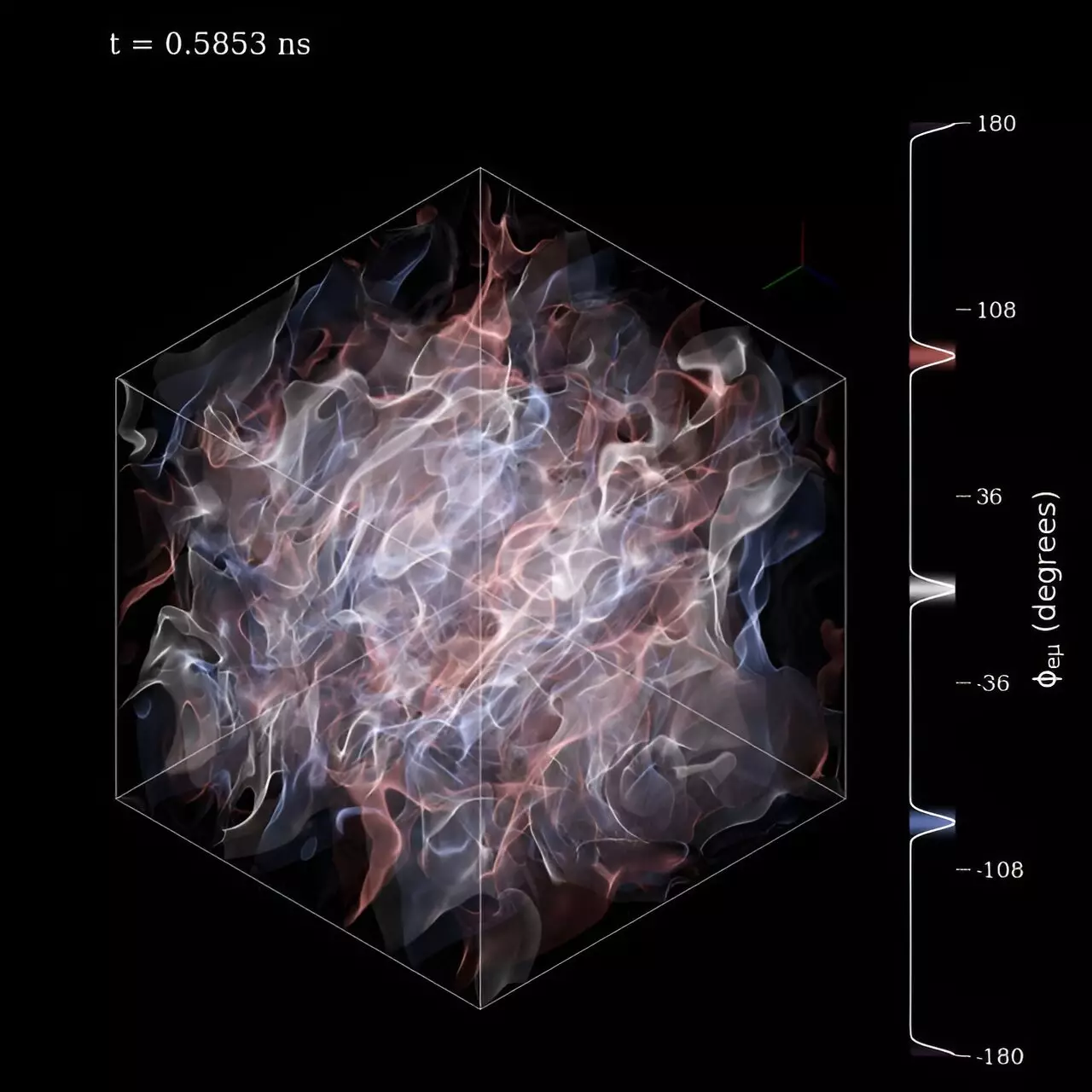Neutrinos, the nearly massless particles that permeate the cosmos, have a fascinating characteristic known as “flavor.” Unlike other particles, neutrinos can switch between different flavors as they traverse through space. This unique behavior makes them intrinsic to understanding various astrophysical phenomena, including core-collapse supernovae and neutron star mergers. However, tracking these elusive particles during such catastrophic events poses an immense challenge due to the intricate dynamics at play.
The Complexity of Neutrino Tracking in Astrophysical Events
In the violent aftermath of a supernova or during a neutron star merger, vast numbers of neutrinos are emitted alongside other cosmic messengers like photons and gravitational waves. Each of these messengers carries vital information about the processes occurring within these stellar objects. Neutrinos, in particular, account for a significant portion of the energy released in these cataclysmic events, making their study crucial for understanding the underlying physics. Nevertheless, the sheer number of neutrinos and their ability to change flavors complicate efforts to model their behavior accurately. The realization that existing methods fall short in capturing these transformations has prompted researchers to seek innovative solutions.
A New Methodology: Bridging Quantum Mechanics and Classical Models
Recent research published in “The Astrophysical Journal” and “Physics Letters B” has proposed an innovative strategy to address this challenge. By expanding traditional calculation techniques to incorporate quantum mechanical aspects of flavor change, researchers aim to simplify the modeling of neutrinos in complex astrophysical systems. This semi-classical angular-momentum method condenses the multitude of neutrino interactions and behaviors into a more manageable framework, enabling scientists to follow the intricate dance of neutrinos and track their flavor transformations more effectively.
The Promise of Angular Momentum in Neutrino Physics
At the heart of this approach lies the angular momentum framework, which encapsulates vital information about neutrino numbers and flux into a succinct set of equations. These equations not only facilitate a deeper understanding of neutrino behavior but also highlight the relationships between neutrinos and the heavy elements formed during stellar explosions. By investigating a specific type of flavor transformation known as “fast-flavor,” researchers noted promising results, as their methodology effectively captured the growth of flavor transitions.
A Call for Exploration: The Future of Neutrino Research
While this pioneering method shows potential, the researchers advocate for further exploration into its applicability across various astrophysical contexts. The initial findings indicate that a deeper understanding of angular moments can offer critical insights into the role of neutrinos in cosmic events, shedding light on the far-reaching implications of their flavor changes. As we delve deeper into the realm of neutrinos, we may unlock not only the secrets of the universe’s most violent occurrences but also enrich our knowledge of fundamental particle physics. The stakes are high, and the journey is just beginning, promising exciting developments in astrophysics and beyond.

